Fashion-focused Americans, curious about what Greta Garbo, Marlene Dietrich, Grace Kelly, and Spanish royalty once wore, should put the Basque town of Getaria high on their list of must-see travel destinations.
The medieval town in northern Spain is now home to the Cristobal Balenciaga Museoa, the world’s first museum dedicated exclusively to an iconic fashion designer. In fact, the 54,000-square-foot, $30 million dollar museum celebrates its first anniversary next month.

The museum’s royal opening, presided over by Spain’s Queen Sofia, French designer Hubert de Givenchy and other high fashion luminaries, was last June. Since then, thousands of tourists have made the journey.
“Getaria is a small town with a population of 2,600 inhabitants. It thrives on hospitality, fishing and viticulture. It’s not close to any major highways, so getting here takes a small effort. If the weather is good, it’s more appealing to visit than if it’s raining or cold,” said D. Javier Gonzalez de Durana, the museum director.
Due to its unique position in the fashion world, the museum could snag a spot in the Guinness World Records. But tucked away in a hamlet near the Bay of Biscay, with its exceptional txakoli (white wine) haute cuisine, Getaria is an added bonus on the road less traveled.
“Balenciaga was the greatest designer of our times. To this add San Sebastian and Getaria’s own appeal, and you have the makings of a magnificent cultural and gastronomical travel experience,” said Modesto Lomba, president of the Asociacion de Creadores de Moda de Espana. ACME is a nonprofit meaning the Association of Fashion Creators of Spain.
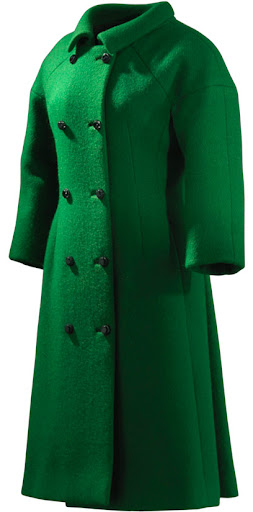
Balenciaga was born in Geteria in 1895 to a humble fisherman and seamstress. His mother, later widowed, worked for Marquesa Casa Torres. As a teen, Balenciaga deconstructed the Marquesa’s Paris wardrobe. Recognizing his talent, she paid for Balenciaga to go to Madrid to learn to be a tailor.
In 1914 he continued honing his tailoring skills in Bordeaux. In 1917, he returned to the Basque region to open his first atelier in San Sebastian. Balenciaga blossomed during nearly 20 years in the seaside resort. While there, Queen Maria Cristina and her daughter Isabel Alfonsa became his clients.
The Spanish Civil War of 1936-39 forced him to move to Paris, where his reputation attracted such clients as the Duchess of Westminster. In Paris, he was hailed as one of the city’s best designers, selected to tour America and Europe with “Theatre de la Mode,” as part of a 1945 exhibition.
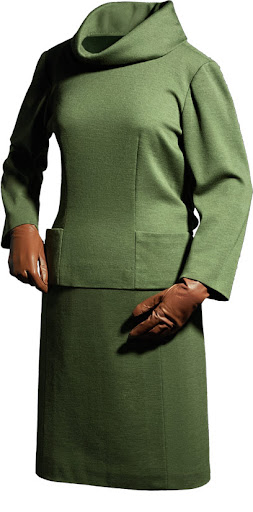
The war years were followed by Francisco Franco’s dictatorship. Balenciaga was forced to close his shops in Madrid and Barcelona. But despite of his many years in France, Balenciaga drew inspiration from Spain.
The new museum was built in homage to the designer who has been called the “greatest couturier of the 20th century.” The 1200 one-of-a-kind collection is the most extensive Balenciaga creations in the world; its millinery pieces include the Marquesa Llanzol’s black, feathered beanie hat.

Balenciaga was not only born in Getaria, he is buried high on a bucolic hill here. Givenchy, who placed flowers on the grave site, called Balenciaga his mentor and idol. He’s also founding president of the Cristobal Balenciaga Foundation, which worked for a decade-in the face of a financial scandal-to make the museum a reality.
The new museum is an enormous wing of tinted, floor-to-ceiling windows attached to Aldamar Palace, a colorful 19th century villa. The Marquesa Casa Torres, Balenciaga’s first client and financier, once owned the palace.
The contrast between the palace and the futuristic façade, with a minimalist interior, is striking. Yet the museum seems a perfect representation of Balenciaga, a master couturier who blurred fashion styles between traditional and contemporary.
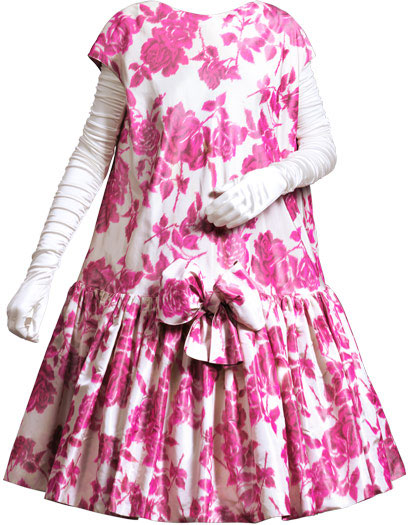
One of Balenciaga’s earliest fashion innovations was evident in is his first collection at 10 Avenue George V in Paris in 1937-38. Inspired by Spanish artists and royals, the collection included his popular “infanta” dress.
In 1947, Balenciaga’s barrel collection experimented with volume at the waist and back. But his greatest contribution to the world of fashion was introduced in 1951. He revolutionized the female silhouette by widening the shoulders and removing the waist.
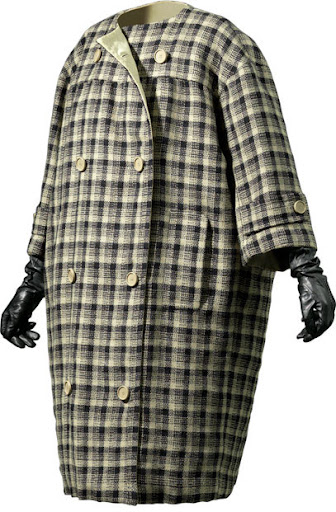
Balenciaga was a maverick determined to present his vision. While French designer Christian Dior presented his “new look” in the form of the hourglass figure, Balenciaga introduced waist-free, flowing fashion styles.
In 1957, Balenciaga bucked the waist-cinching style and created the “baby doll” dress, which was followed by the popular “sack dress.” In 1958, he designed the wildly popular baby doll dress. The Peacock dress, longer in the back shorter in front, and his high-waist empire line were runway hits.
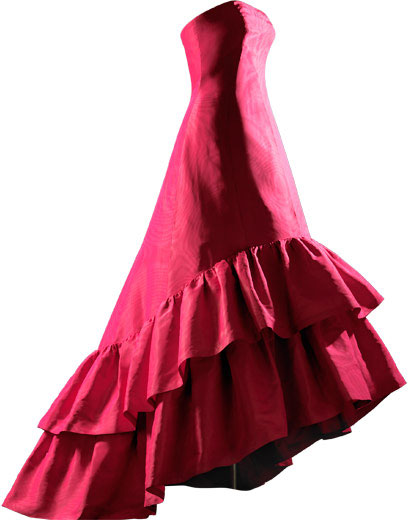
The new museum holds the most representative collection in terms of quality and time span covered. Many of the exquisite pieces were donated by celebrities and royalty, including Fabiola de Mora y Aragon, granddaughter of Marquesa Casa Torres and future Queen of Belgium.
The unique, mink-trimmed wedding gown Balenciaga designed for her 1960 wedding is a show stopper. Museum goers may see a bit of irony, however, in the wedding dress Balenciaga designed for Francisco Franco’s granddaughter.
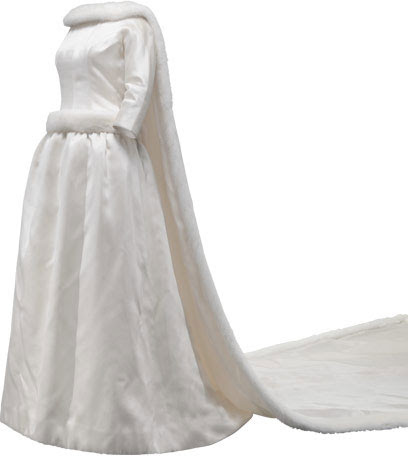
Museum visitors learn about Balenciaga’s life and times through six display areas situated in the expansive museum. Visitors start with the Golden Age of Haute Couture. From there they proceed to daywear (suits worn by Grace Kelly, Queen of Monaco), evening gowns, wedding dresses, and essentials.
“There are several outstanding pieces, but my favorite is the Queen Fabiola of Belgium’s wedding dress,” said Rosa Clara, one of Spain’s most famous wedding gown designers with boutiques around the globe.
“This museum’s value, when added to the impeccable presentation of this collection, is that it’s in the designer’s native town. So a visit becomes a pilgrimage to the gran maestro’s very origins,” she added.
Although the museum has a fashion treasure trove, displays are on a rotation basis. That’s why visitors see only 90 pieces at a time on display. The rotation system is an effort to preserve and protect the vintage couture.
“The objective is to protect the pieces against the light and atmosphere, and to show the essence of Balenciaga’s work by rotating the extensive collection. In addition, the goal is not to bore visitors,” said Lomba, who made his fashion debut in 1988 and was present at the museum’s opening.
Bilbao and its Guggenheim Museum are west of Getaria, slightly over an hour’s drive. Half an hour’s drive east is the fashionable city of San Sebastian. The nearest airports are an hour away in Bilbao and Biarritz. So fashion lovers may consider the season when planning a trip to Getaria on the coast of the province of Gipuzkoa.
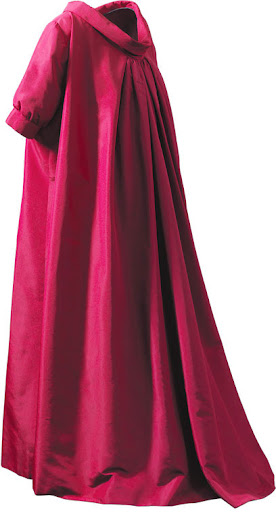
“The average number of visitors we get monthly is 6,700. But since we are a seasonal museum, we get more visitors between April and October than November through March. Tourism is high in the summer, but Getaria attracts tourists year round,” said Gonzalez de Durana
“Most visitors are European, especially Spanish and French. These two represent 12 percent. Others come from England, Germany, and Italy. Americans and Asias represent the smallest percentage thus far. But most visitors either wore Balenciaga designs or admired him,” he added.
The exhibit spaces represent historic eras and individual collections. Arranged in chronological order of Balenciaga’s life, the areas are professionally arranged and carefully lighted. Knowledgeable docents are on hand to give guided tours.
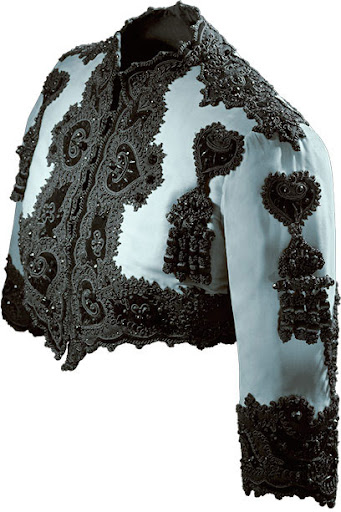
“It was very gratifying and enriching to see that he continues being the master after all these years. Seeing his works of art, one continues to learn from him,” said Marta de Diego, a Valencia haute couture fashion designer.
De Diego also donated one of her pieces to the University of North Texas-based Texas Fashion Collection, which helped organize a 2007 Balenciaga exhibit at Dallas’ Meadow Museum. The Meadows has largest collection of Spanish artworks outside of Spain.
“He has influenced me, he influences me today, and he will influence me in the future because the way in which he handled forms and volume can only be achieved in an atelier that adheres to the execution of technical perfection,” de Diego said.
Oscar de la Renta worked for Balenciaga as an apprentice in Madrid in the 1950s. By the 1960s, Balenciaga had influenced generations of fashion designers, including Emmanuel Ungaro, Paco Rabanne, Andre Courreges and others.
Balenciaga lived in Paris from 1937 to 1968. His first runway collection was so lauded by the Paris press that it launched him to international prominence. In Paris, he met famed couturier Coco Chanel. She admired his ability to design, cut, and sew, later saying, “He is the true couturier among us.”
Yet even though he called France home for 30 years, Balenciaga never forgot his Spanish roots. Many of his iconic pieces reflect his love of Spanish artists (Velasquez inspired on of his top designs), history, and pageantry.
Matadors, mantillas, polka dots, ruffled flamenco skirts, Basque folkloric garb, and fishermen - even the attire of nuns and monks - stimulated Balenciaga’s imagination. His 50 years of inventive haute creations are a legacy that still reverberates today.
France awarded Balenciaga the title of Chevalier de la Legion d’ honneur in May 1958. In 1968, he retired, closing his houses in Paris, Madrid, and Barcelona. Balenciaga never created ready to wear, and avoided the media. He died in Javea (Alicante) Spain in 1972 at the age of 77.
Despite 40 years since his death, Balenciaga lives on through the Balenciaga fashion house headed by Nicolas Ghesquiere and owned by the Gucci Group. In fact, according to an article in the Wall Street Journal, haute couture is back. New generations of designers admire Balenciaga’s work and want to learn from it.
“Another group of visitors we see is made up of different disciplines, such as photographers, painters, and sculptors. They recognize Balenciaga as a master whose ideas they can incorporate in their own projects right now,” said Gonzalez de Durana.
The museum has become the region’s central attraction offering temporary exhibits, education classes, seminars, and the like. But Gonzalez Durana dismissed the idea that the Balenciaga museum is expected to do for Getaria what the Guggenheim did for Bilbao.
“I don’t know who said that, but there’s no comparison between Bilbao and Getaria. Evidently, to this picturesque town’s many attractions, the museum is an added asset that combines with culture, gastronomy, beaches, and tourism,” he said.
The museum telephone number is 011 34 943 00 88 40. For more information on visiting Spain, go to spain.info.com , basquecountry-tourism.com and tourism.euskadi.net
Much of the information in the article was derived from the Cristobal Balenciaga Museoa website: cristobalbalencigamuseoa.com Other sources include: newyorktimes.com , creadores.org, deyoung.famsf and sfstation.com
Rosie Carbo is the Lifestyles Editor for Wandering Educators
